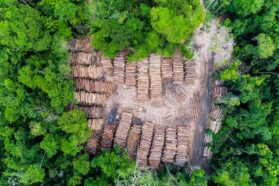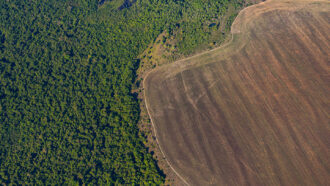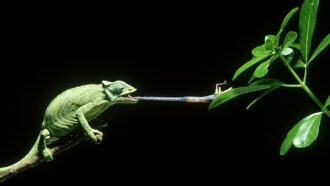Secret forest fungi partner with plants — and help the climate
Vast underground networks trade messages and resources, including carbon
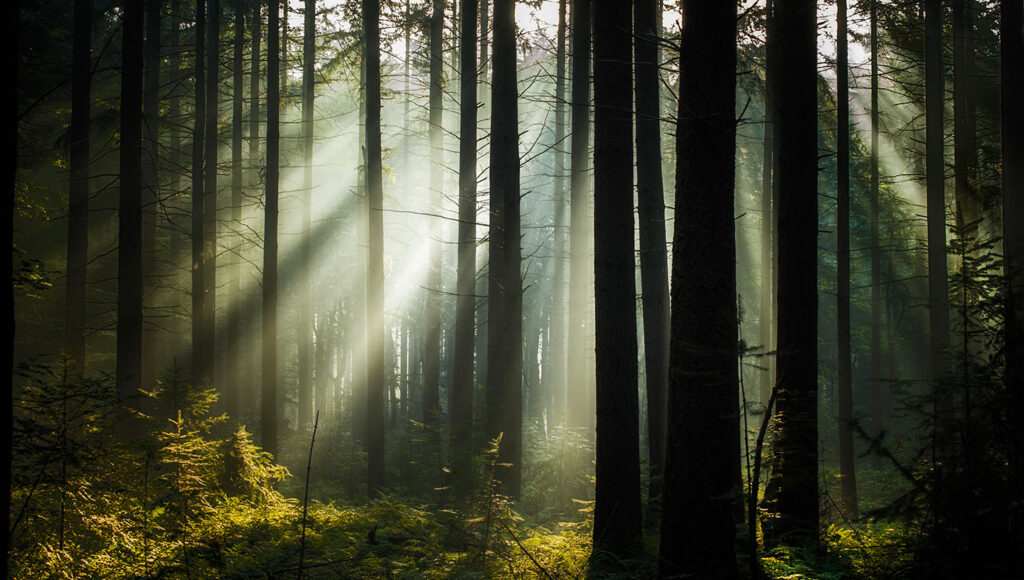
Forest visitors tend to look for single paths between the trees. But hidden below the forest floor a tangled maze of pathways connects trees together. Unseen, this vast fungal network shuttles carbon and other nutrients around the forest. Welcome to the wood wide web.
bob van den berg photography/Moment/Getty Images Plus
E. Toby Kiers rarely wore shoes as a kid. She loved the feeling of soil between her toes. “I always felt like something was under there, something secret and hidden,” she says.
Now, as an adult, she’s revealing that hidden world. It’s a tangled network of fungus and plant roots. They all trade resources and even messages. People walk over this network all the time without even realizing it’s there. Yet understanding its mysteries could help us better cope with Earth’s changing climate.
“It’s pretty much the last frontier in understanding how our planet works,” says Kiers. She studies fungal networks as an evolutionary biologist at Free University Amsterdam. It’s in the Netherlands.
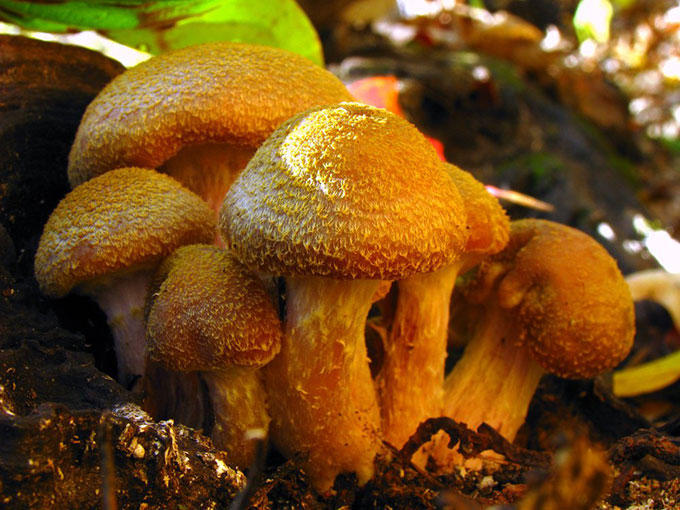
When you think of fungus, mushrooms may come to mind. But the mushrooms that pop up above ground are temporary. The main body of a typical forest fungus remains underground. It is a vast, branching network of very thin, thread-like structures called mycelia (My-SEE-lee-uh). In just one teaspoon of soil there may be enough of these threads to span 10 kilometers (6.2 miles), writes Merlin Sheldrake in his 2020 book, Entangled Life.
All fungi need carbon to grow. Fungi that form networks may feed on the carbon in decaying wood or dead plant matter. Or they may form relationships with living plants. Some fungal networks grow around root tips, like tiny socks. These are known as EM, short for ectomycorrhizae (EK-toh-my-koh-RYE-zee). Others grow into the cells of plant roots. Known as AM, they have an even longer name: arbuscular mycorrhizae (Ar-BUS-kew-lur MY-koh-RYE-zee).
Plants get carbon from photosynthesis. But to grow, they also need nitrogen and phosphorus. Mycelia can range farther than roots to find these nutrients. So fungi and plants regularly trade with each other to get what they need. Almost all the plants in the world share resources through a network of mycelia. Mostly, plants give carbon and receive nitrogen and phosphorus. But mycelia also distribute carbon among plants and carry messages between them. It’s almost like the internet or a highway system.
Suzanne Simard is a forest ecologist in Canada at the University of British Columbia in Vancouver. She was the first to show that trees could exchange carbon through fungal networks in a natural setting. A 1997 news report about that work called this the “wood wide web.” (It’s a play on the “world wide web,” an early name for the internet.) This isn’t a perfect metaphor, however, because a fungal system is alive and has its own agenda. But her work opened people’s eyes to the fact that a forest is a highly interconnected ecosystem.
How do networks of mycelia grow and explore? How do they connect with plants? And can their carbon-trading skills help us cope with climate change? Researchers are just starting to find answers.

Memory without a brain
A fungus is not a plant. It also is not an animal. It belongs to its own taxonomic kingdom. Though mushrooms remain in one place like plants, mycelia can sense and explore their world. Sheldrake writes, “Mycelium is a living, growing investigation.” Imagine if you could divide your body in two, each side walking through a different door at the same time, then eventually rejoin with yourself. Mycelia do this. They grow in many directions in search of food. Unsuccessful ventures die off while successful ones thicken and branch further. Mycelia have no brain. Yet they fight with other fungi and with critters that graze on them. They even seem to have a basic form of memory, according to new research by Yu Fukasawa and Lynne Boddy.
At Cardiff University in the United Kingdom, Boddy studies fungi that break down things like wood and dead plants. In the 1980s, she showed how a fungal network searches for food and then re-forms itself after it finds something yummy. Last year, Fukasawa and Boddy tested the memory of a typical fungus that likes to feast on wood. They placed blocks of wood containing this fungus onto trays of soil. Then they let the fungus explore until it found a nearby block of fungus-free wood.
Next, the researchers lifted out the original block and carefully shaved off every bit of mycelia growing from it. They placed it into a new tray, with no new block of wood to discover. As the mycelia in the block began to grow again, they sent out extra threads from the side that had faced food in the past. “We did this on lots of different trays and with lots of different sizes of wooden blocks,” says Boddy. “Almost always, you get much more growth on the side where the new food resource had been.”
The fungus had somehow remembered which part of itself had faced toward food in the past. So it sent out more growth in that direction. Boddy thinks that the more researchers look, the more examples of fungal memory they will find.
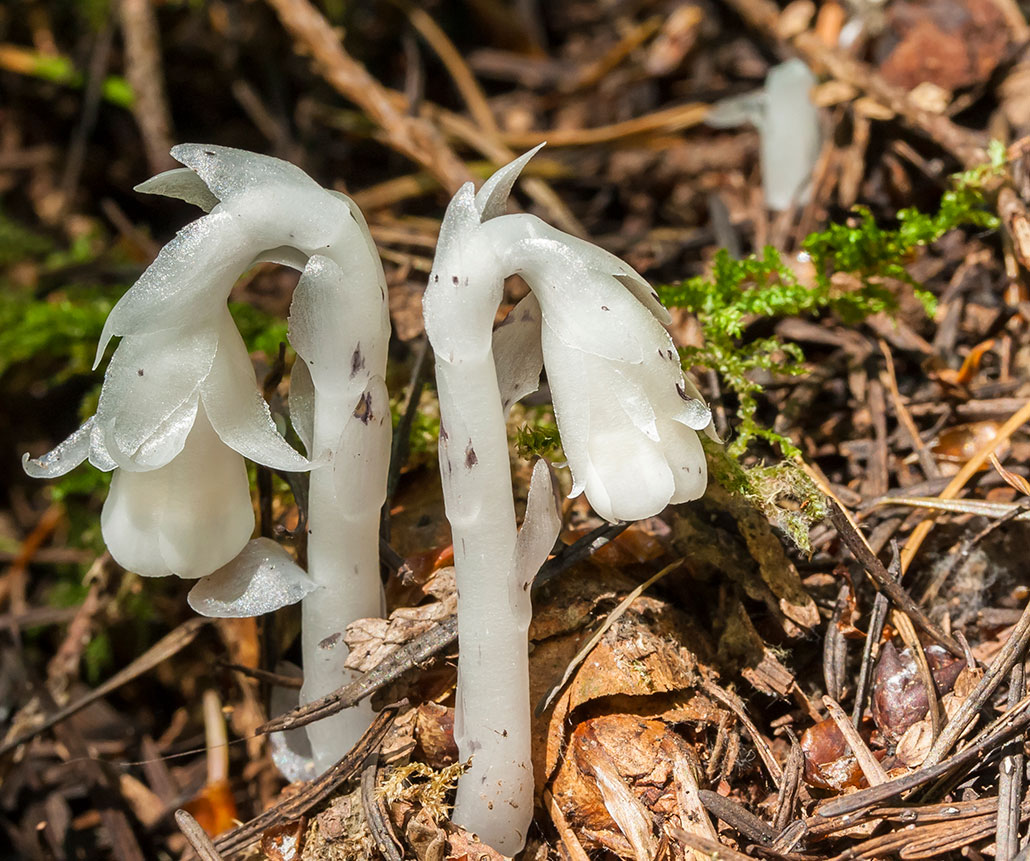
Hoarding and trading
A fungus that networks with living plants doesn’t feast on them to get the carbon it needs. It trades. Kiers’s team in Amsterdam has studied how this works in AM networks. They’re the ones that grow inside plant root cells. These mycelia regularly move nutrients through the soil. And they seem to do so with the shrewdness of a bartering salesperson.
It isn’t easy to watch trading inside those microscopic threads below the ground. So the researchers developed a way to put a chemical tag on phosphorus. They added tiny dots that glow when ultraviolet light strikes them. They can make these dots glow in different colors. This lets them watch how phosphorus moves through a network.
In one 2019 study, Kiers’s team grew mycelia and carrot roots in small dishes. Some regions in each dish were rich in the nutrient phosphorus. Other areas had little of this fertilizer. The fungus moved phosphorus from the rich area to the poor area. Kiers thinks this happens because plants growing in a nutrient-poor area can’t get phosphorus on their own through their roots. So compared to plants growing in a nutrient-rich area, those at a nutrient-poor site will trade more carbon to the mycelia for phosphorus.
In 2020, Kiers showed that mycelia will also hoard nutrients when they are plentiful. This makes those nutrients temporarily unavailable to plant roots. Then, “plants have to pay [the mycelia] more carbon to get at it,” says Kiers.
Invisible messages
Mycelia don’t just trade with plants. They also carry their messages. Plants may seem like they sit there doing nothing. In fact, they constantly chat among themselves using chemicals. “Anything that makes plants smell nice or have a flavor, that’s stuff plants are making,” says Kathryn Morris. And they’re most likely making it to kill other things, such as insects or disease-causing microbes, she says. Or they could make it as a signal. Morris is a biologist at Xavier University in Cincinnati, Ohio.
Plants can broadcast scent messages through the air. But they also send some through the soil. Consider when aphids attack a broad bean plant. The besieged plant blasts out chemicals that attract wasps to eat the aphids. A 2013 study showed that a broad bean plant that isn’t under attack — but that taps into the same fungal network as one that is — will also send out these warnings. This happens even when researchers separate the plants with plastic barriers so they can’t detect signals floating through the air. This suggests the plants must be sending messages underground.
It may seem like the plant in trouble is helping its neighbor. But maybe not. The plant that hasn’t been attacked yet may be eavesdropping to detect when it needs to take action and protect itself. Or perhaps the fungal network carries these messages because this helps the survival of all the plants on which it depends for carbon.
Morris’s research with AM networks has shown that plants’ chemical signals reach much farther through the soil if mycelia are there than when they aren’t. What she wants to know now is how this happens. How do the mycelia broadcast messages? “We really don’t know,” says Morris. Her team is working on a method that will detect where chemicals are and how they move through fungal networks.

Educators and Parents, Sign Up for The Cheat Sheet
Weekly updates to help you use Science News Explores in the learning environment
Thank you for signing up!
There was a problem signing you up.
Yummy carbon
For a fungus, the whole point of networking with plants is to get the carbon it needs to grow. Plants get their carbon from the atmosphere. They take up carbon-dioxide gas during photosynthesis. Then they turn it into carbon-based sugars that they use to grow. Along the way, those plants will trade some of their sugars with fungi.
The globe is warming, in part, because of all the greenhouse gases that human activities spew into the air as we power our cars, electricity-generating plants, electronics and other machines. Carbon dioxide is the most common greenhouse gas. As you may already know, planting trees and boosting the health of forests can help suck extra carbon dioxide out of the air.
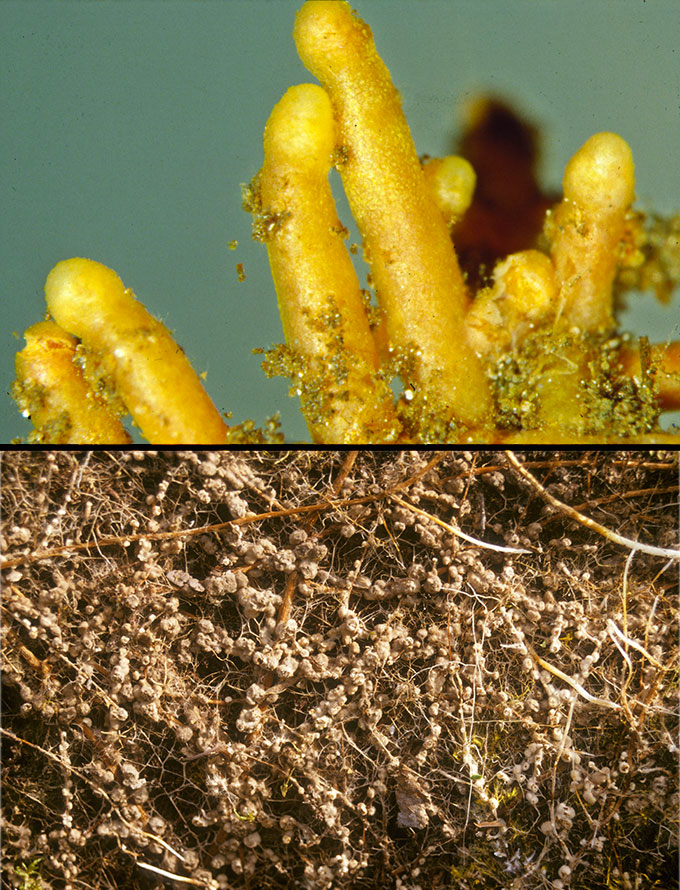
But not all forests do equal work when it comes to combating climate change. The types of trees and the types of fungi that these trees communicate with can make a big difference in how much carbon a forest absorbs.
The AM fungal networks that Kiers and Morris study are by far the most common type in the world. “They are ancient,” says Kabir Peay. He is a biologist at Stanford University in California. These networks evolved some 500 million years ago. The mycelia in them tend to network with only one or a few trees or other plants at a time.
EM networks — the type that form tiny socks around plant roots — are newer. Some EM fungi can decompose dead wood or plants or network with living plants. EM networks tend to be larger and more interconnected than the AM types. Trees also find them “more expensive,” says Peay. By that he means they charge trees higher prices for nutrients. To make those payments, trees that trade with EM mycelia tend to absorb more carbon from the air, says Peay.
New lab research looked at how much carbon European beech trees take in when connected to an EM network. Bruna Imai is a PhD student in microbiology at the University of Vienna in Austria. After venturing into a nearby forest to collect tree seedlings, she set up pairs of baby trees in her lab. She let an EM network grow to connect some pairs. She kept other pairs from linking up.
To measure the amount of carbon the trees absorbed during the experiment, she exposed them to a special form of carbon that isn’t common in nature. She found that plants that were connected to a fungal network took in nearly twice as much carbon dioxide as did plants not connected to any network. This would suggest those fungal networks can play a role in slowing climate change.
A world map of fungi
Fungal networks could be an important ally in the fight against climate change. “That’s the goal,” says Kiers. But first, researchers need to learn more about the complex sharing of resources and messages underfoot. Trillions of tiny worms, amoebas and microbes live in soil. Hundreds of thousands of fungal species live there, too. All of these species interact with plants and move carbon around. And they do this “in ways we don’t fully understand right now,” says Peay at Stanford.
Researchers also need to map fungal networks. In 2019, Peay and his team decided to start on this. Another group had already done a global tree survey. It had counted 3 trillion trees. Those data came from hundreds of researchers who went out into forests to identify individual trees and estimate their total across the planet.
Peay’s team wrote a computer program that looked at the mix of tree species tallied and the climate in each forest. Then it determined what type of fungal network would most likely thrive there. The result was the first world map showing where EM and AM fungal networks likely dominate. AM networks tend to prefer warm, tropical areas. EM networks prefer colder forests.
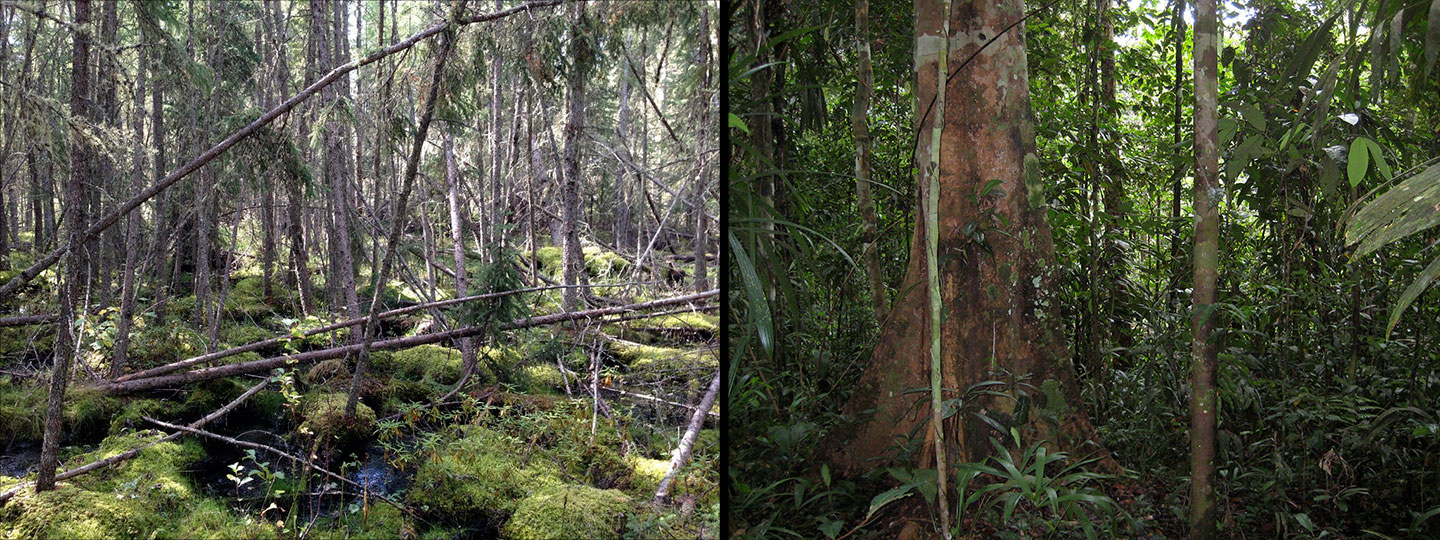
As Earth’s climate warms, forests filled with AM fungi could take over areas that are currently filled with EM fungi. Then those forests would trap even less carbon dioxide than they do now. Peay says that many EM forests are already on the edge of this sort of transformation. Plus, most land used for farming and grazing ends up with poor soil that lacks healthy fungal networks. It end up releasing carbon rather than trapping it.
Peay’s study didn’t directly confirm the presence of particular types of fungal networks under the soil across the globe. In 2021, Kiers launched a new organization called SPUN (The Society for the Protection of Underground Networks) to take that next step. She calls it “an underground climate movement.”
Its goal is to protect fungal networks and use them to help heal ecosystems. It also runs a youth group called SPUN Youth (@spun.youth on Instagram and TikTok). Eventually, teens will be able to get involved. They’ll be asked to help identify fungal networks in the natural areas near their homes.
When the protection of nature only focuses on plants and animals above the ground, says Kiers, we’re missing half of the picture. “There are ecosystems not being saved because we can’t see them,” she says.
She hopes that as people learn more about the living world beneath our feet, they will care more about protecting the fungal species that help trees, plants and even people thrive.





